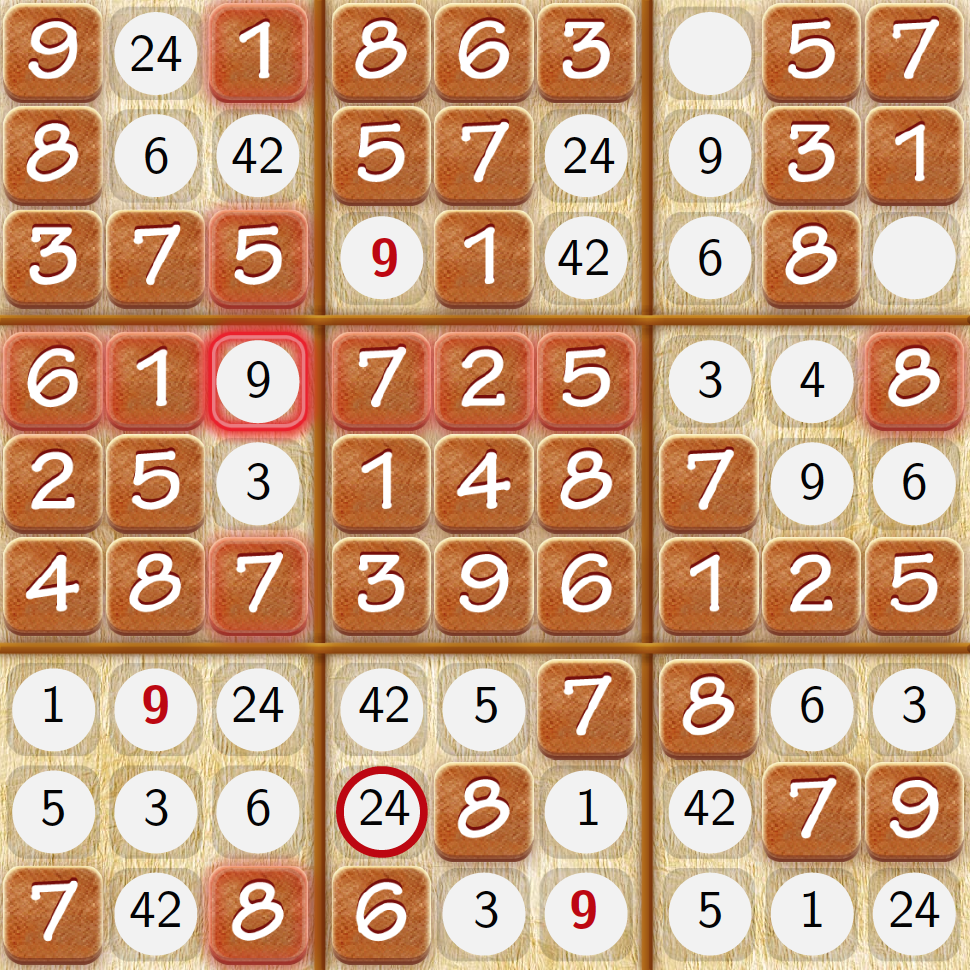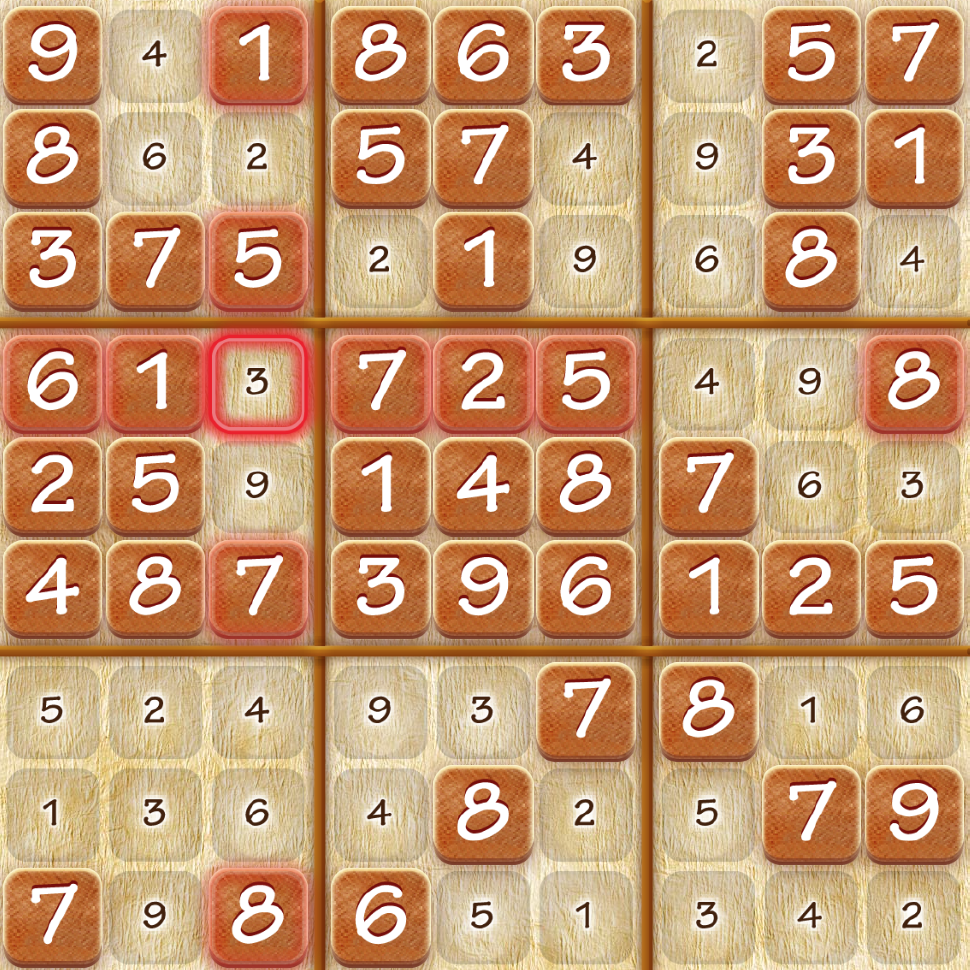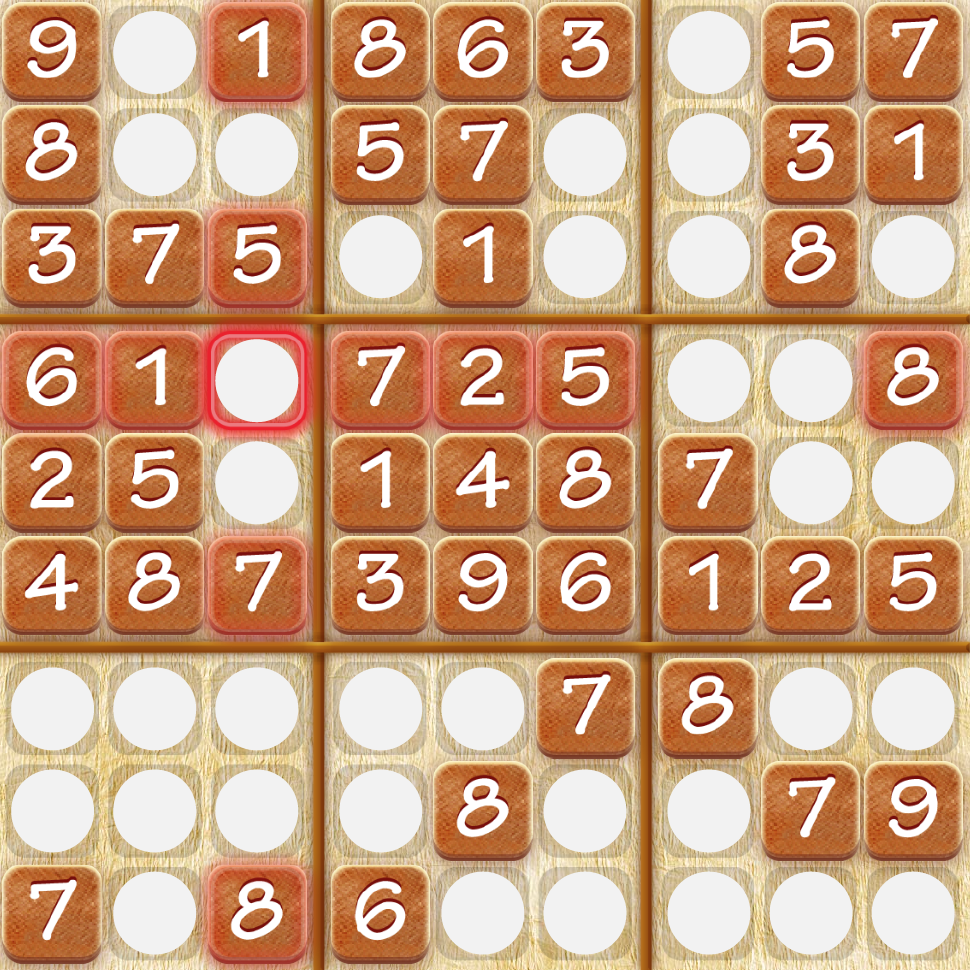
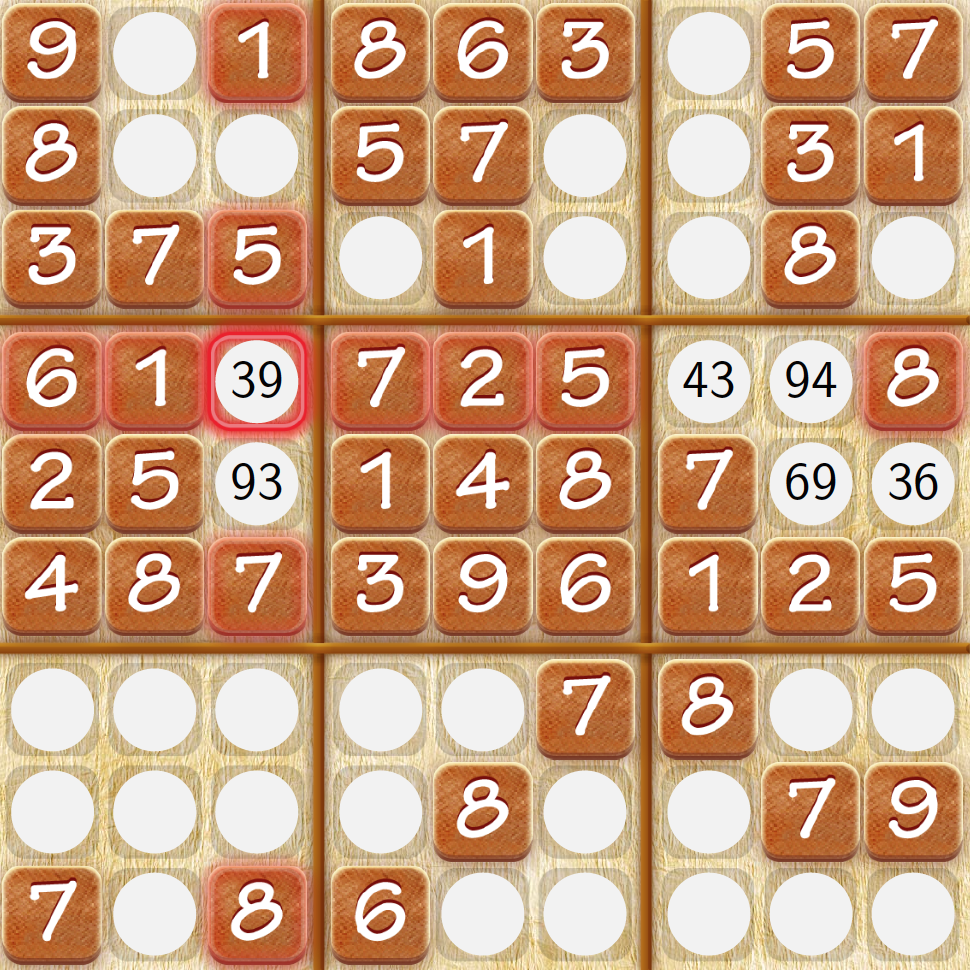
The challenge is to take Quantum Mechanics seriously. To do that we must find a way to think of the Real World on it's own terms. Fundamentally we need to think different about how we conceptualize how processes develop (‽), unfold (‽), or progress (‽). The following is one of several attempts to model this process in a familiar setting.
A SuDoKu puzzle is not a SuDoKu puzzle unless its solution is unique. Many strategies miss this important caveat as they seek only to discover a (rather than the) solution.
I have never been interested in finding a solution to any given initial pattern. My interest is in finding the solution to any given initial pattern.
In fact the holy grail would to be to discover an error in Frank Longo's body of work. Check Rebel Heart Bookstore to order Longo's books. Tell them RIP sent you.
A SuDoKu puzzle consists of a nine by nine array of cells. This can best be described as a three by three array of nine Super Cells wherein each Super Cell contains a three by three array of nine cells.
Starting with an initial configuration of numbers in several of the 81 cells, the objective of the puzzle is to fill all remaining cells subject to three basic rules.
To be pedantic let's refer to the rules as:
On 14 March 2020 I encountered the gold standard of this strategies modality: Branch Points ‽
Given the circumstances I do not remember the pattern of clues for this SuDoKu puzzle. As is typical several cells could be assigned values by inspection.
My usual approach is to fill as many cells as possible with pairs of numbers that are consistent with the above stated rules. I then work my way through the array rewriting the pairs of numbers as ordered pairs of numbers.
On this particular day I realized that the ordered pairs in Row 5 and Row 6 formed what I have termed a Branch Point1. That is, starting from any one of the cells you can generate the same unique array of ordered pairs throughout the puzzle. · · · 1(A "point defined by its (x, y) location" is like A "cell defined by its (Column, Row) location") For this example the Branch Point is located at (3,6).
Furthermore starting from this particular branch point allows me to describe the existence of a second branch point in this array.


For most, we are done. The puzzle has been solved and there is nothing left to learn. That is: Observe that the first number of each ordered pair forms a pattern consistant with the three conditions and therefor represent a solution to the SuDoKu Puzzle.
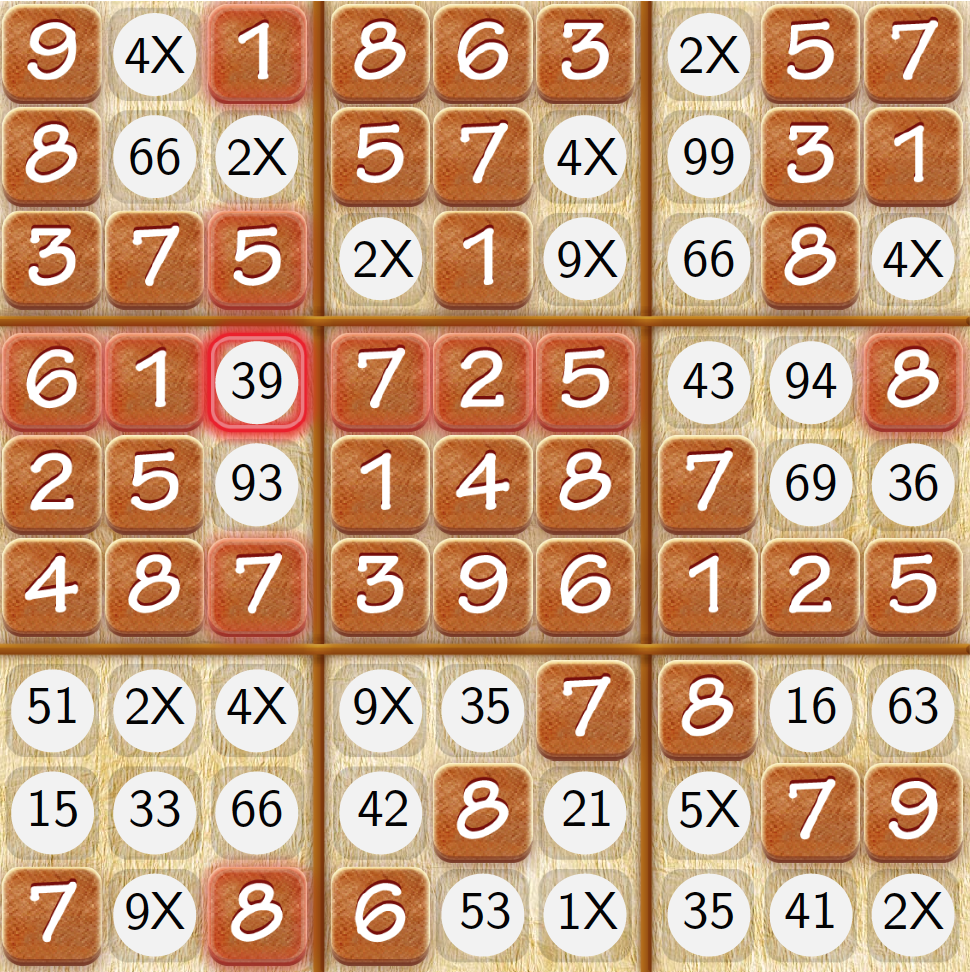
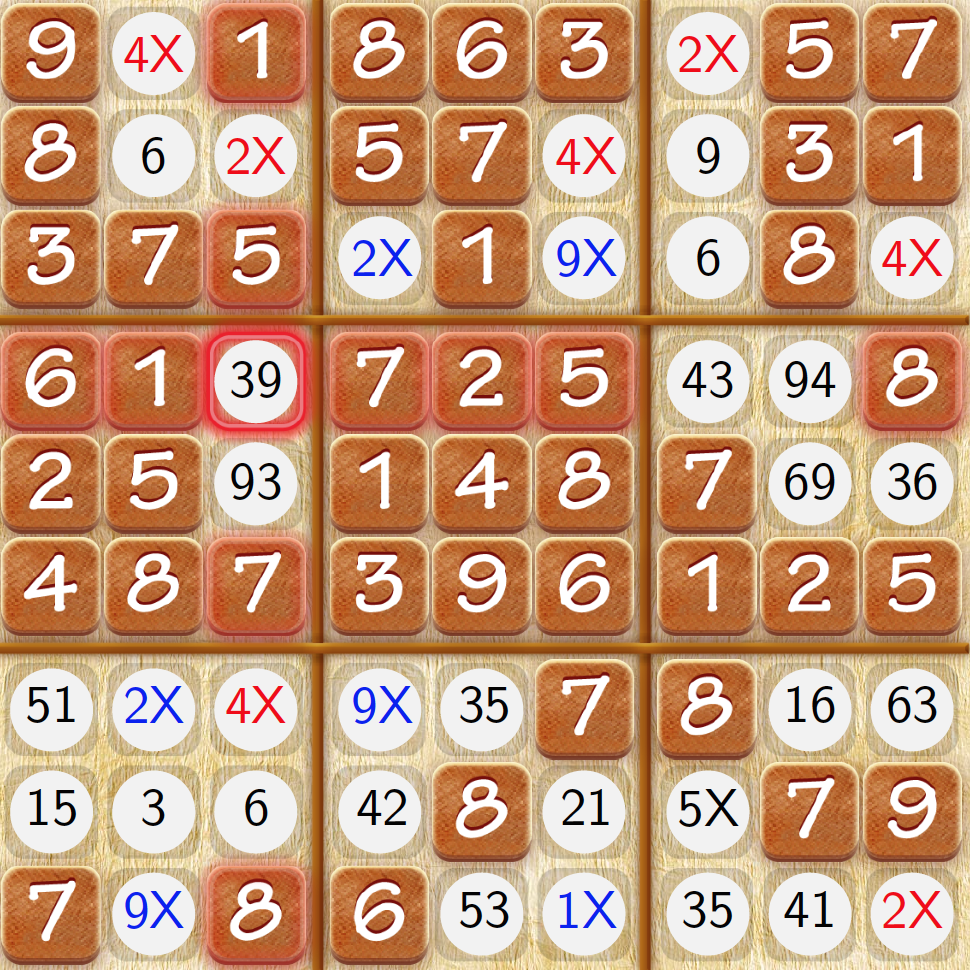
To clarify the status: In the image to the right I have removed redundancies in the ordered pairs, and highlighted (using color) interesting relationships and observations.
Interesting Relationships and Observations
Starting at the branch point (3,6) we quickly discover the critical cell (6,2) can only contain the number 1 thereby insuring that the righthand values will be placed in their respective cells.
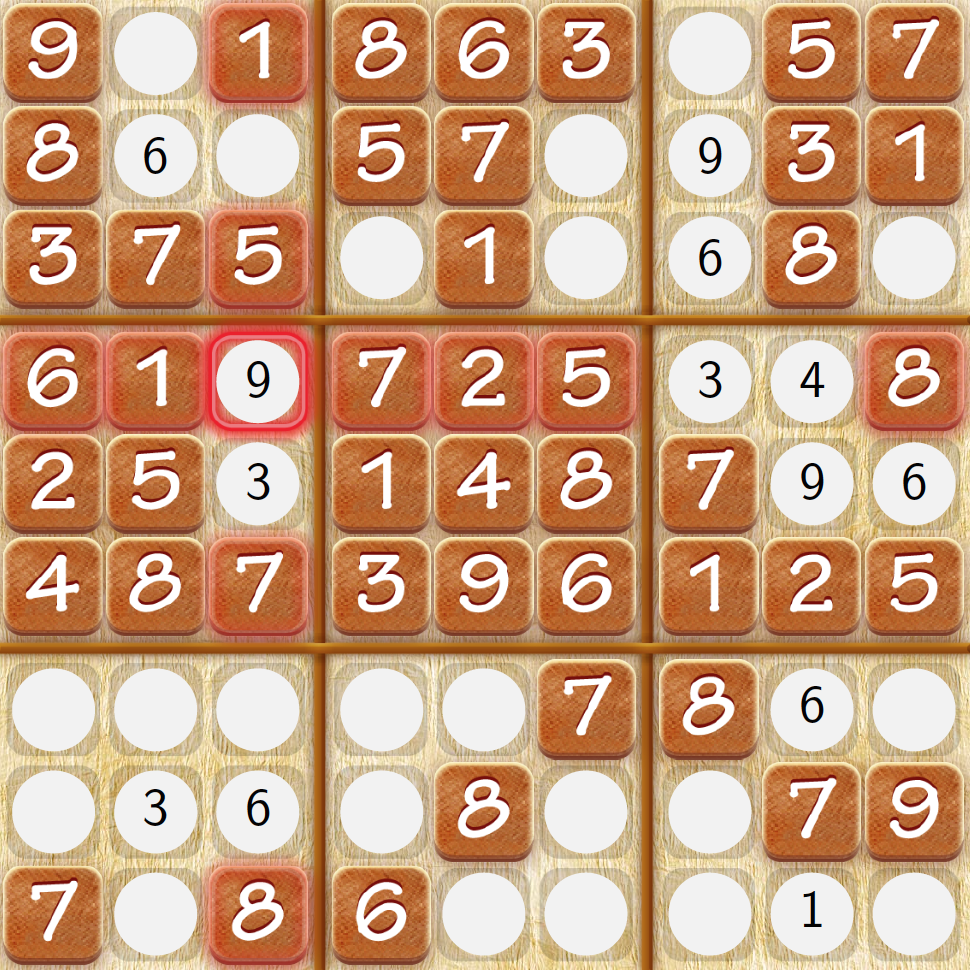
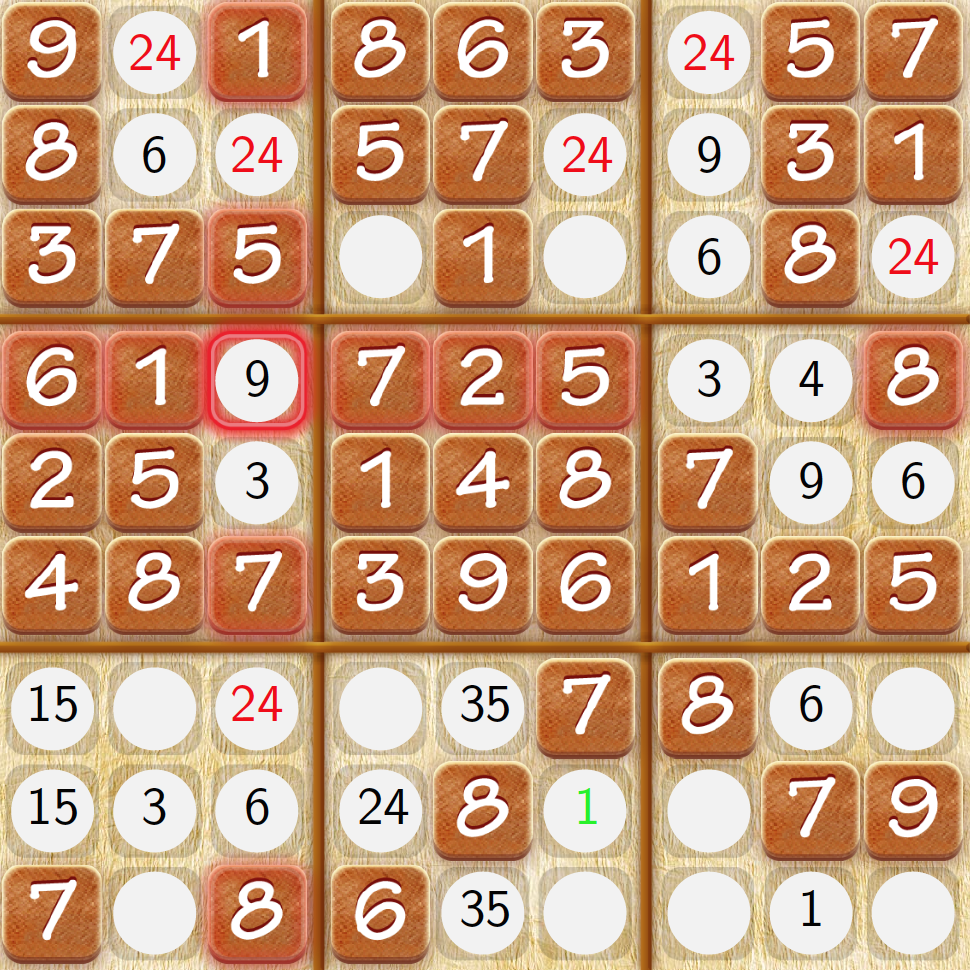
If you prefer you can pick a starting cell for this branch point. I will how ever set up the conclusion by first observing the pattern of six empty cells that are available for the number nine.
Much like the ordered pair conundrum there are two choices for the placement of the number nine in three of the six empty cells.
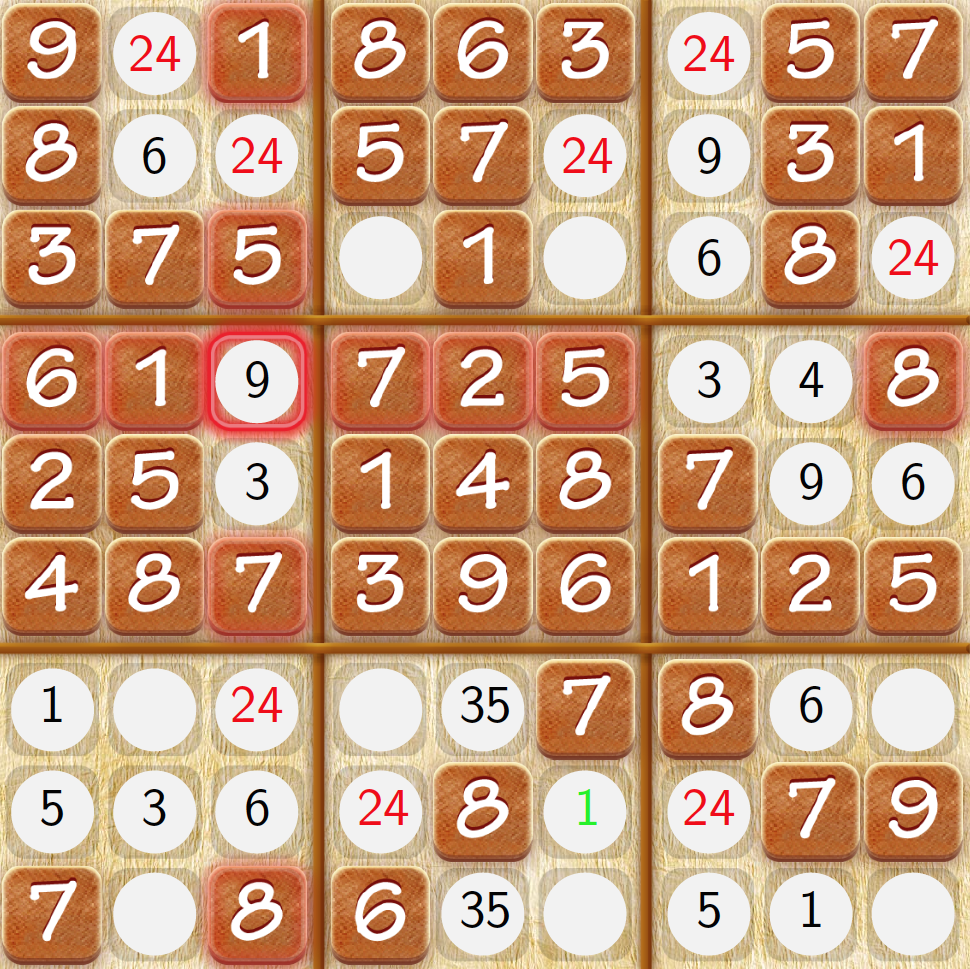
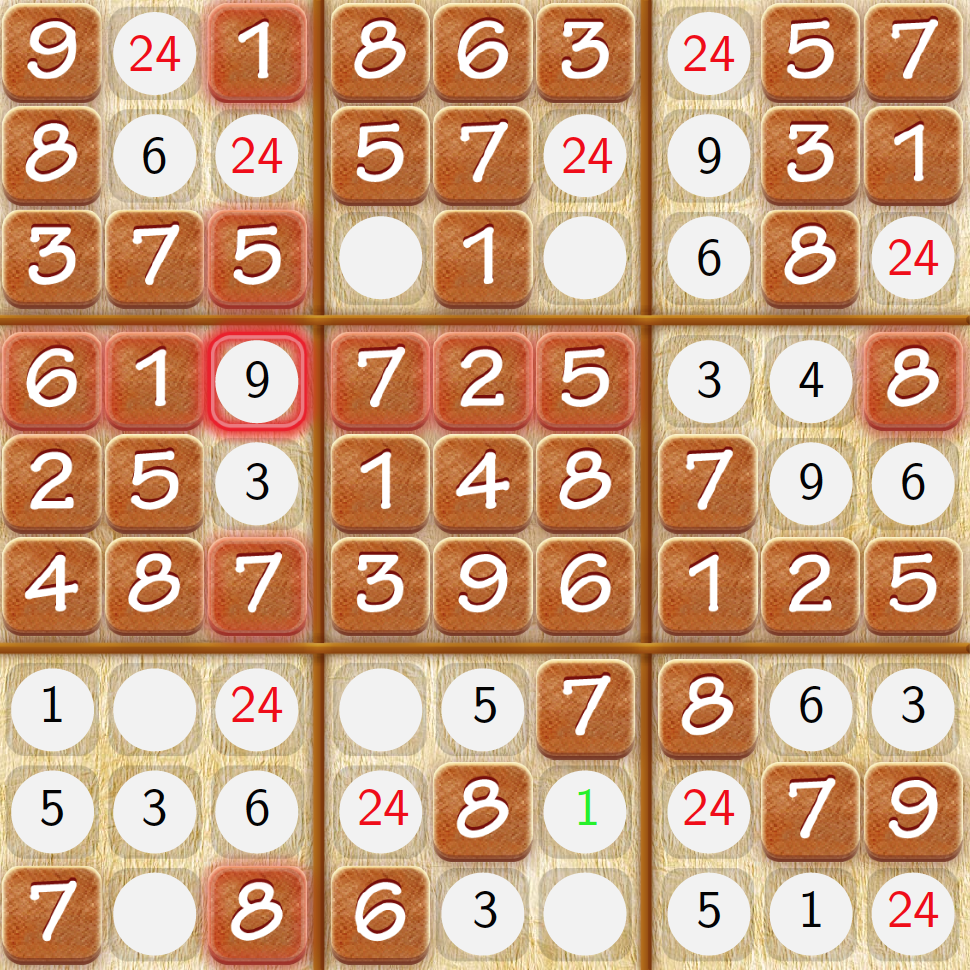
Consider the option that the number nine occupies the green locations. Selecting (4, 2) as the branch point and propagating through the array reveals the two blank cells in the upper-right supercell have no valid numbers regardless of the choice at the branch point.
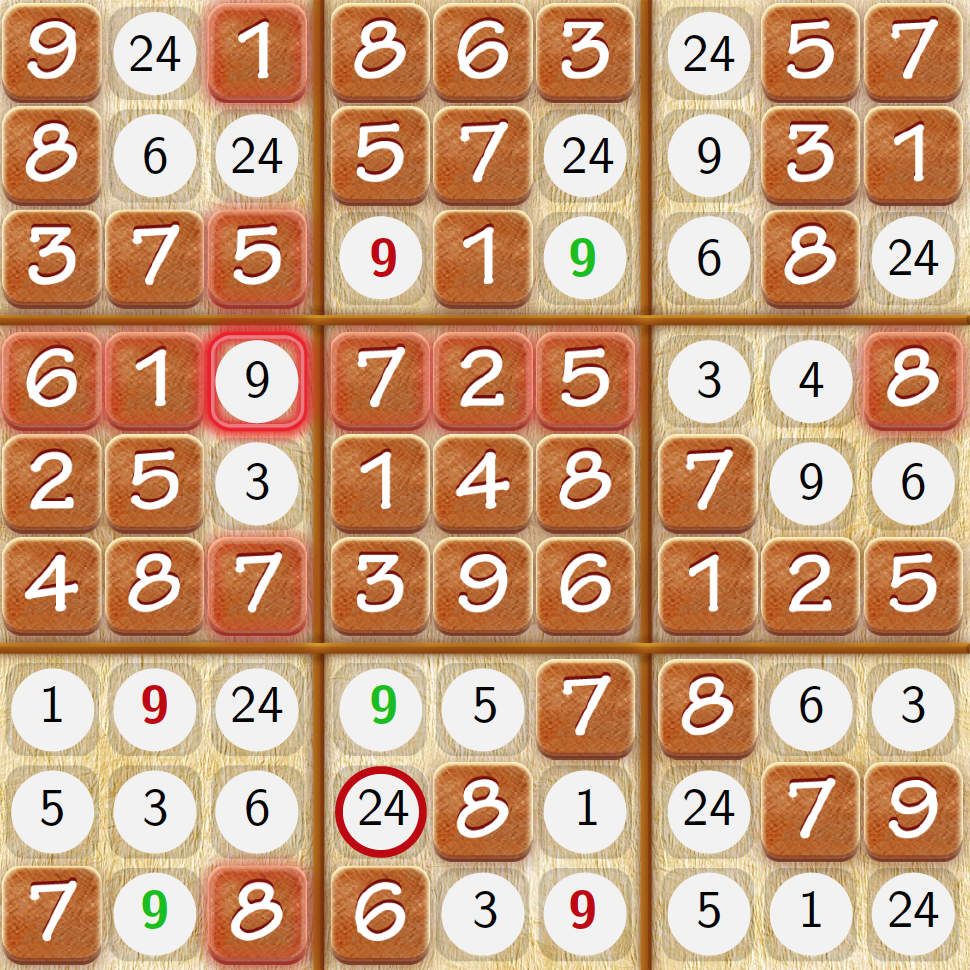
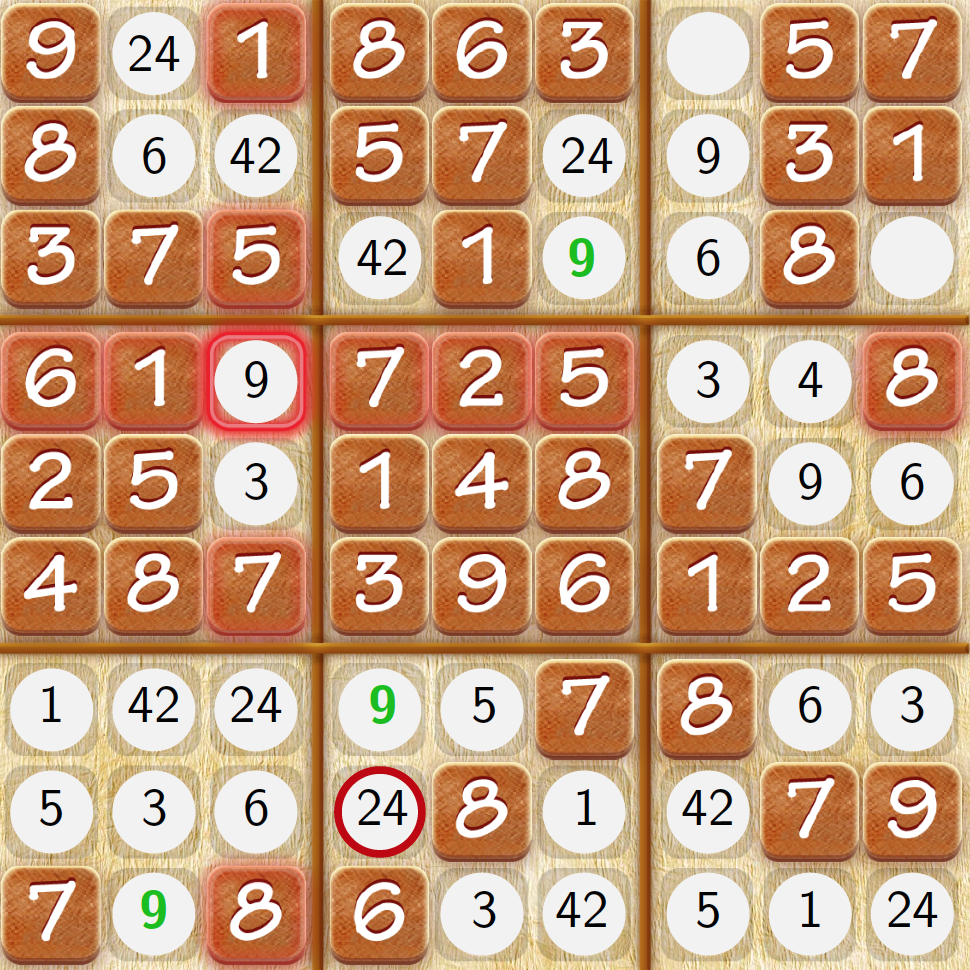
Consider the option that the number nine occupies the red locations. Selecting (4, 2) as the branch point and propagating through the array reveals the two blank cells in the upper-right supercell have no valid numbers regardless of the choice at the branch point.

